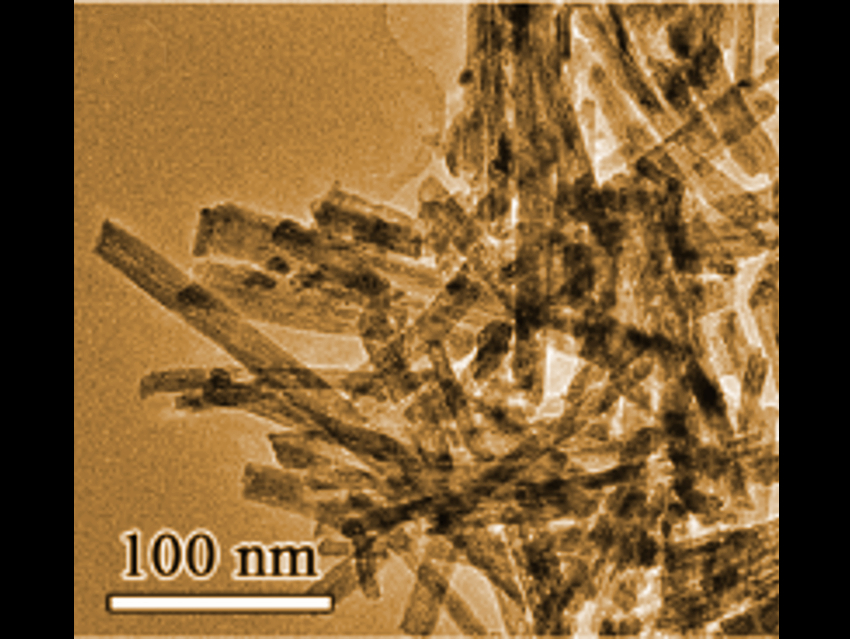Nitrogen oxides (NOx) are a major source of air pollution. These pollutants stem from the combustion of fossil fuels. Removing them is particularly challenging in the steel, cement, and glass industries, where the exhaust gases have comparatively low temperatures. The catalysts commonly used for NOx removal are deactivated by residual SO2 in the exhaust at these temperatures.
Hangsheng Yang, Yunhao Lu, Yong Wang, and colleagues, Zhejiang University, Hangzhou, China, have developed a MnOx/CeO2 nanorod catalyst (pictured) with outstanding resistance to SO2 deactivation. The team designed the catalyst based on information obtained from in-situ transmission electron microscopy (TEM) experiments under the reaction conditions and from theoretical calculations. The catalyst consists of MnOx clusters loaded on the surface of CeO2 nanorods and was synthesized by dropping a solution of Mn(CH3COO)2∙4H2O onto a CeO2 nanorod powder, followed by calcination.
The catalysts show almost no activity loss: The apparent NOx reaction rate was unchanged at 1800 µmol g−1 h−1 for 1000 h at 523 K in the presence of 200 ppm SO2. According to the researchers, this is achieved by establishing a dynamic equilibrium between sulfate formation and decomposition over the CeO2 surface during the reactions and simultaneously protecting the MnOx cluster from the steric hindrance induced by SO2. This minimizes the deactivation of active catalytic sites.
- Oxide Catalysts with Ultrastrong Resistance to SO2 Deactivation for Removing Nitric Oxide at Low Temperature,
Zhaoxia Ma, Liping Sheng, Xinwei Wang, Wentao Yuan, Shiyuan Chen, Wei Xue, Gaorong Han, Ze Zhang, Hangsheng Yang, Yunhao Lu, Yong Wang,
Adv. Mater. 2019, 31, 1903719.
https://doi.org/10.1002/adma.201903719




